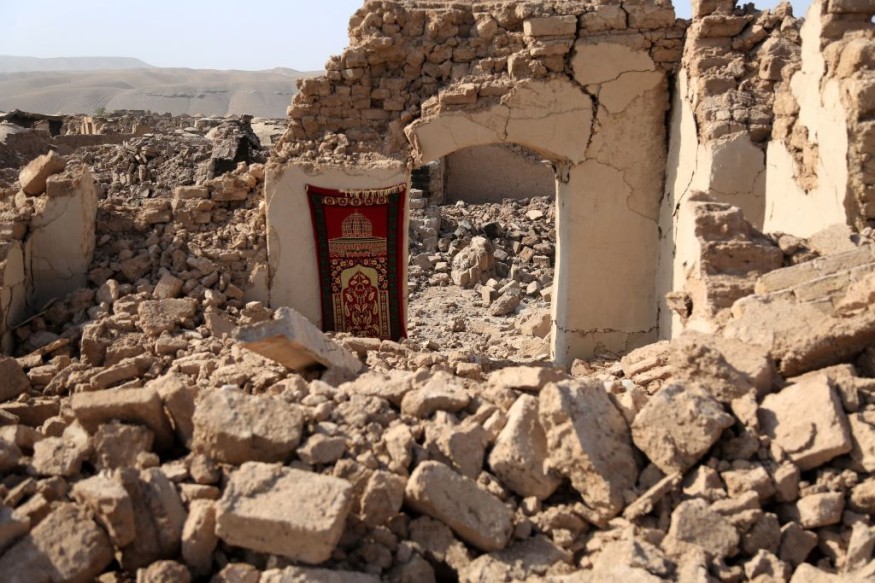
Another powerful earthquake struck Afghanistan days after a strong one killed thousands of its residents.
Experts from the US Geological Survey said that the latest quake's epicenter was about 21 miles (34km) outside Herat, the provincial capital. Its focus was 5 miles below the surface.
Officials said that the latest magnitude 6.3 earthquake had occurred as the result of thrust faulting at shallow depths near the far western terminus of the Hindu Kush mountain range. This earthquake was preceded by three other magnitude 6.3 earthquakes in the previous days.
They said that four earthquakes had taken place on east-west striking fault planes that dip to either the north or south. The earthquakes occurred within the Eurasia plate in an intracontinental mountain belt.
Two individuals were killed following the earthquake while the regional hospital in Herat has received more than 100 people wounded.
Victims still reeling from past quakes
At present, communities in Herat Province are still reeling from a series of shallow, strong earthquakes and aftershocks which have jolted the same area in Western Afghanistan since October 7 of this year.
Authorities said that destroyed residences as well as the fear of returning homes due to persistent aftershocks have led to several informal sites sprouting across the Herat City. These displacements sites are being assessed, with officials committing that humanitarian response is already underway.
Officials from the United Nations said that more than 90% of the people killed in the previous quakes were women and children. They struck during the daytime, while many of the men in the region were working outdoors.
Meanwhile, Taliban officials said the earlier quakes killed more than 2,000 people across the province. The epicenter was in Zenda Jan district, where the majority of the casualties and damage were recorded.
Based on records, more than 19,250 people (3,197 families) have been directly impacted by the previous earthquakes across Zindajan (1,398 families), Injil (914 families), Kushk/Rabat-e-Sangai (385), Ghulan (360 families), Herat (121 families) and Khosan (19) districts.
Humanitarian responders still continue to assess communities, with numbers of casualties still expected to rise over the coming days.
So far, immediate humanitarian priorities include the provision of tents and transitional shelters for victims amid the winter, the strengthening of disease surveillance systems and rehabilitation of damaged health facilities.
Meanwhile, partner groups are responding with immediate response packages, including tents, tarpaulins, blankets, food and nutrition assistance, water trucking and WASH supplies, emergency healthcare and protection.
Previous quakes
The US Geological Survey said that earthquakes in Afghanistan and its surrounding regions are common because of the complex and active interactions between the Arabia, Eurasia, and India plates.
It explained that earthquakes in western and central Afghanistan are primarily influenced by the northward movement of the Arabia plate relative to the Eurasia plate.
Experts said that since 1920, seven other earthquakes of magnitude 6 or larger have occurred within 250 km of the October 7 earthquake, all within Iran.
They noted that these previous earthquakes included a magnitude 7.3 earthquake in May 1997 that caused 1,567 fatalities, and a magnitude 7.1 earthquake in November 1979.
Related Article : Afghan Quake: Global Response 'Slow,' Approaching Winter Seen To Challenge Response Efforts
Related Video:
© 2025 NatureWorldNews.com All rights reserved. Do not reproduce without permission.





